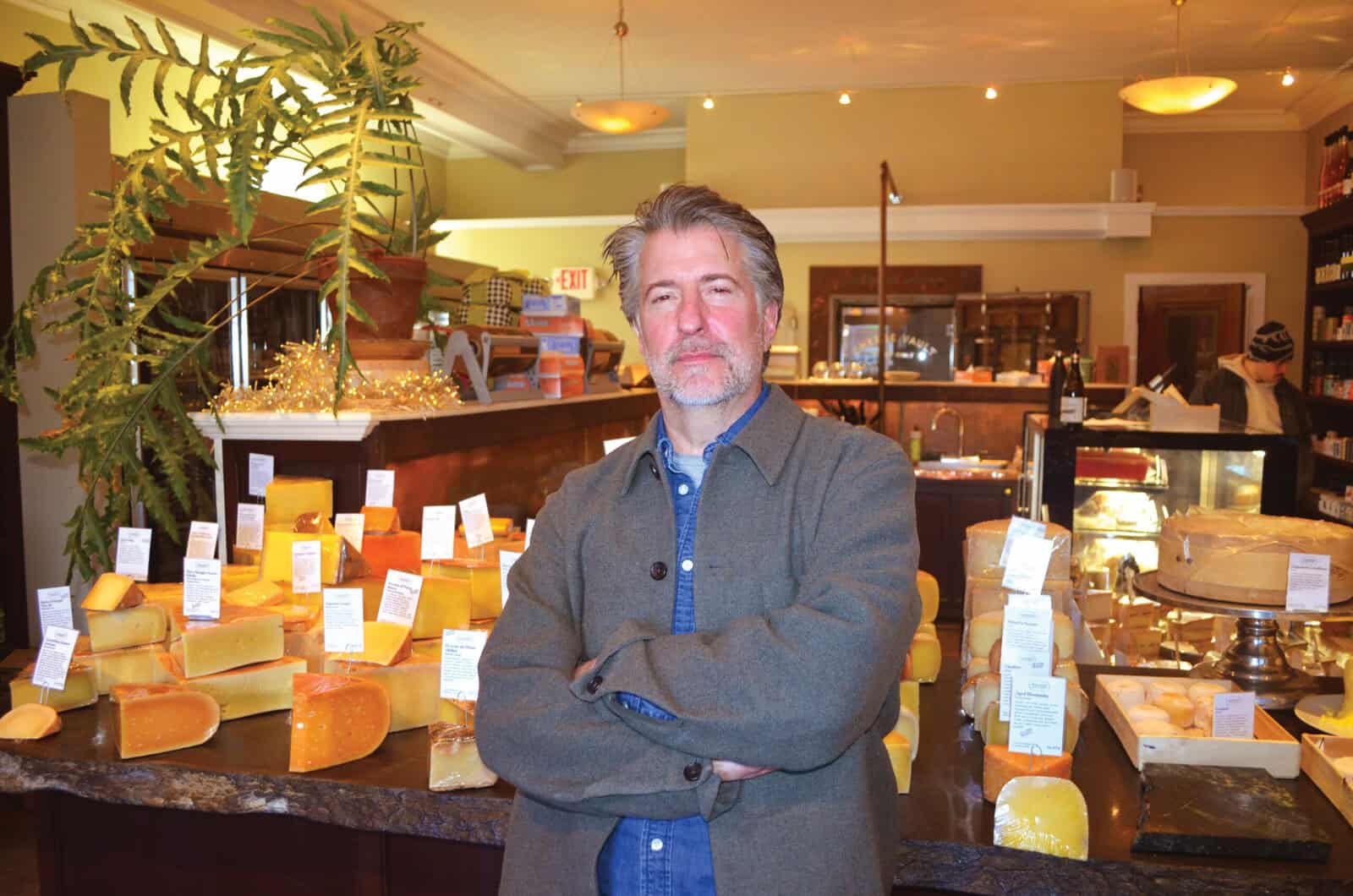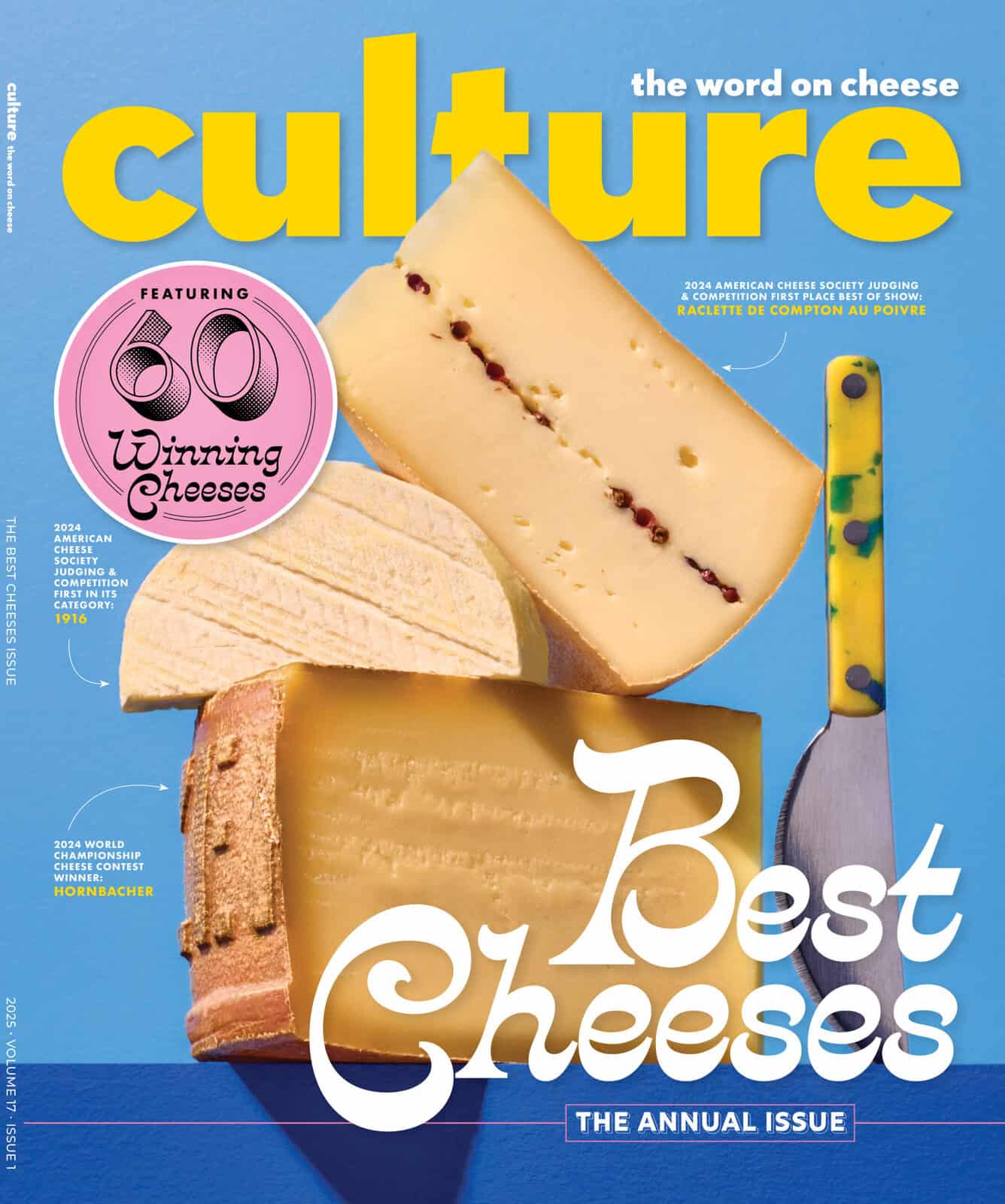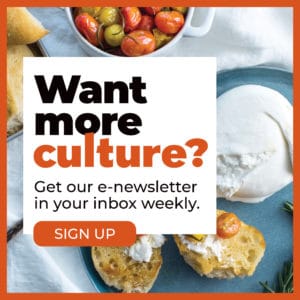Matt Rubiner’s journey to become one of the most respected cheesemongers in America is anything but traditional. After studying Japanese language and culture in college and working on US government contracts and at the Massachusetts Institute of Technology, Rubiner found his true calling in the world of artisanal cheese. Today, he runs the acclaimed Rubiner’s Cheesemongers in Great Barrington, Massachusetts, which he opened over 20 years ago, and where his passion for sharing exceptional cheese has won over chefs, critics, and legions of devoted customers.
We talked with Rubiner about how his unconventional background informed his approach to the cheese industry, the formative experiences that sparked his love for high-quality cheese, and his insights on the evolution of the American cheese scene over the past three decades.
CM: You have quite a unique background, going from Japanese studies and government contract work to eventually finding your calling in the cheese industry. How did those early experiences shape your approach?
MR: I’d love to say my background in Japan and working with the military and intelligence communities has made me a driven, disciplined, mission-oriented strategist, a data analyst, a logistics expert, and a fearless leader. But the truth is, I’m way too lazy and scattered for any of that—though, I am pretty good with a cheese knife.
That said, there are definite similarities in the way I approached my research on Japan and my work in the military with how I learned about cheese. As a military analyst, it wasn’t enough to just study strictly military things—troop sizes, equipment, and their capabilities—you also had to consider the political and cultural context that shaped those operations.
Similarly with cheese, it’s not enough to just know the basics—where it’s from, how it’s made, who made it, what it tastes like. To truly know a cheese and be able to tell its tale, which is such a big part of a cheesemonger’s job, you have to look at its history, local traditions, cultural and social structures, as well as the land and the climate. Then you can understand why a cheese became what it is.
CM: Can you recall a specific moment or experience that first sparked your passion for high-quality artisanal cheese?
MR: It must have been at Zingerman’s Delicatessen in Ann Arbor when I was a student at the University of Michigan in the ’80s. I don’t remember any specific cheeses, just that I spent a lot of my parents’ money there on cheese—and pastrami.
Honestly, I didn’t go into the cheese industry with any specific passion or love for it. I was just generally interested in the food business and looking for a change. But I saw cheese as this rich, complex subject that would satisfy both my academic bent and something more sensual. So, I took a job at Formaggio Kitchen in Cambridge for $6 an hour and threw myself into it. I never looked back.
CM: I understand your grandfather was in the grocery business. How has your family history shaped your career in cheese?
MR: Profoundly. My maternal grandfather ran a family supermarket business, Penn Fruit, based in Philadelphia. All of that ended in the ’70s, long before I went into the business—but somehow, it was always in me.
I remember as a kid, my grandfather would take me to different food stores around Detroit. He would tell me, “When you walk in, close your eyes and smell. What do you smell? Pungent cheese? The steely, clean aroma of fresh fish? Sweet fresh fruit, bread baking? Or do you smell antiseptic or trash, or nothing at all?” And I still do that every time I walk into a food store. It tells you all you need to know. When you walk into my shop, you smell cheese. Powerfully. Kids cover their noses and run screaming.
CM: You’ve impressed renowned chefs and critics such as Thomas Keller and Ruth Reichl with your cheese selections. What’s your process for curating and discovering new cheeses?
MR: Process?! Hah! Customers often comment on how well-curated our store is, but I really don’t think of it as curation in the way a gallery owner would curate an exhibit. I’m just buying cheeses that I like from talented artisans and honest people I trust and respect.
I work with a network of wonderful cheese peoples—makers, importers, affineurs—that I’ve cultivated over the years. Of course, everything I sell is filtered through my own palate. That’s important to me. My name is on the door. I see no reason to sell anything I don’t love and believe in just because I think there’s a market for it. Customers appreciate that point of view and an edited selection.
CM: How has the American cheese scene evolved since you entered the industry in the mid-1990s?
MR: Spectacularly. When I got into the business in 1994, there didn’t seem to be that much going on, at least that I could see, or that was commercially available. There were a few hippie ladies making goat cheese out west and some rich guys turning their storybook farms to good use. But overall quality seemed spotty, if well meaning, and the few American artisan-ish cheeses we sold at Formaggio didn’t get much respect from the very Euro-focused clientele.
I remember the first time I judged the American Cheese Society (ACS) competition in the mid ’90s, there were fewer than 100 entries. Then there were a few sparks. I remember the legendary Cindy Major bringing us a wheel of Vermont Shepherd [now called Verano]. It wasn’t great, but she wanted so badly to improve. Soon, it would be the grand dame of American farmstead cheese.
And I remember Tim Stone of Great Hill Farm [now Great Hill Blue] coming to the store, saying he wanted to make a raw-milk farmstead blue, and we were like, “Good luck, pal. Let us know when it’s done.” What a hard thing to try! And he did, and in the 30 years or so since then, there has never not been Great Hill Blue in my case.
From there, the industry grew fast—more explosion than evolution. And the market blew up, driven, I think, by an increasingly sophisticated customer, fueled by travel, food TV, and celebrity chefs. The old prejudice against American cheese faded. The last time I judged the ACS, there were more than 2,000 entries!
And I think the Cheesemonger Invitational, started by Adam Moskowitz in 2010, really transformed the American cheese business, creating a tight-knit cadre of cheesemongers in the most convivial and productive way, changing the profession of American cheesemongering forever. I can’t overstate it.
CM: You’ve described cheese as something that can be viewed from cultural, culinary, and scientific angles. How do you balance tradition and innovation in your cheese shop and Rubi’s Café?
MR: We don’t. We skew heavy toward tradition. I’m not sure we’ve ever done anything innovative in our lives—except the egg sandwich in the café, which is nothing less than a triumph over the laws of physics (a story for another time).
It’s an old-time trade we’re in, with guilds and rare skills and arcane tools. Our ancestor cheesemongers pretty much figured it all out. We’re not trying to do anything different than they did, excluding our fancy Italian cheese case.
Our cheeses sit on a giant black slab of local stone, goat cheeses age and wrinkle in wooden boxes; cheddars and pecorino, Comté and gruyères, Wensleydales and manchegos ripen on spruce planks in our cool, damp cave. Nothing new.
Our café is mostly sandwiches with no frills, testing the proposition that simple recipes and extreme quality of ingredients will trump technique, since we have no real cooking skills or much equipment. Our espresso machine is old. Our cappuccinos are pillowy and fluffy with no fancy designs.
CM: Can you share a memorable story from your early days as the “Cheese Boy” in Boston?
MR: OK, one Cheese Boy story. I got the name Cheese Boy back in ’94 or ’95 in Cambridge for my habit of showing up at fancy restaurants, dolled up and dandy, always clad in a posh Barbour oilskin hunting jacket with many lined pockets for stuffing dead grouse and pheasants; I stuffed them with cheese. They were my ripening coats.
My typical M.O. was to sit at the bar or a table for one, order a fancy meal and a fancy bottle of wine, and eat alone while reading a book in some foreign language I couldn’t understand. This attracted attention.
After the meal, I would ask the waiter for a plate and a sturdy knife, explaining that I wanted to send the chef a board of rare cheeses to thank them for the lovely repast. This was, of course, just an elaborate sales pitch, and it mostly worked.
One evening, I went to the great Boston restaurant Biba. In the plush, burgundy, drapey bar, I struck up conversation with a couple. The man was born in Italy but had not been back in many years. Upon learning of my profession, he began to lament a long-lost cheese from his Tuscan childhood, a young pecorino from a little farm on the road to Pienza.
I stood up, reached into my breast pocket, and pulled out a little wheel of young pecorino from that very farm. And then, without a word, I turned and walked into the Boston night. Swear to god. The magic cheese coat!
CM: What are your top five cheeses for personal consumption?
MR: I could never list a top five. There are so many, and besides, they’re constantly changing. Most of my cheese eating is done in the morning while setting up the store.
I eat a lot of Taleggio—the best for meat roll-ups. And youngish pecorinos. Also, older pecorinos. And often, a bit of Mrs. Appleby’s Cheshire or Mrs. Kirkham’s Lancashire. I’m old enough to remember when the two Mrs. still made both cheeses.
And sometimes, I’ll eat the gnarliest, moldiest goat cheese on our counter. Once, while sweeping out the walk-in at Formaggio, I came across a Roves des Garrigues, an herby tasting Provençal chèvre, that had rolled from its box and under the shelves weeks or months before. I ate it. It was thrilling.
CM: What advice would you give to someone who is considering a dramatic career change to follow their passion?
MR: I would say, whatever you can do or dream you can do, begin it. “Boldness has a genius, power, magic in it.” Oh wait, that’s Goethe. Or somebody. But that would be the gist. Like he said. Also: marry rich.




